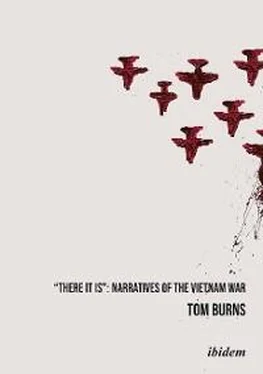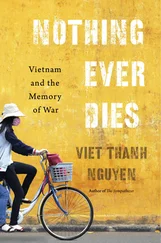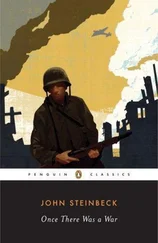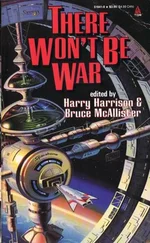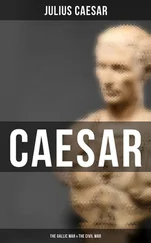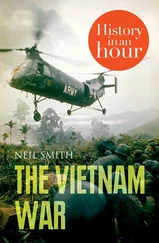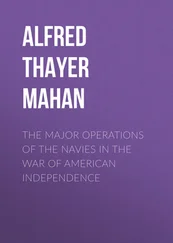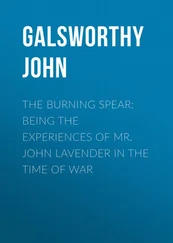6The Pentagon Papers, as published by The New York Times (New York: Bantam, 1971), p. 54.
7Ellsberg tells the story in his memoir Secrets: A Memoir of Vietnam and the Pentagon Papers (New York:Viking, 2002).
8Summarized, with quotes, from the Introduction by Neil Sheehan, pp. ix-x. The Pentagon Papers cited in this and subsequent chapters always refers to the Times collection in the form of the Bantam paperback of 677 pages. The Pentagon Papers are often the source for the facts cited in many histories of the war.
9Schulzinger, Robert D. A Time for War: The United States and Vietnam, 1941-1975 (New York: Oxford University Press, 1997), pp. 17-21. It is sadly ironic that Ho Chi Minh worked for the Office of Strategic Services (OSS)—the predecessor of the CIA--during World War II, helping to rescue downed American pilots.
10Herring, George C., America’s Longest War: The United States and Vietnam, 1950-1975. Second Edition (New York: Knopf, 1986), p. 25; Halberstam, David, The Best and the Brightest; Halberstam, David, The Best and the Brightest (New York: Ballantine, 1992), p. 145
11The Rector of the important Vietnamese University of Hué told the American reporter and writer Ward Just on his trip to that city that the war was really between the Americans and the Chinese., saying that “the Vietnamese had no real part to play except to offer the state”. On the same trip, Just interviewed a revolutionary student leader “who did not feel a part of what the war was supposed to be about, nor especially anxious to die for what they regarded as American foreign policy objectives.” Just, Ward S., To What End—Report from Vietnam (Boston: Houghton-Mifflin, 1968), pp. 132, 134.
12Butterfield, Fox, “The Truman and Eisenhower Years 1945-1960,” Chapt. 1, Pentagon Papers, p. 10.
13Butterfield, Pentagon Papers, pp. 3-4.
14Qtd. in Herring, America’s Longest War, p. 47.
15Schulzinger, A Time for War, p. 46.
16Herr, Michael, Dispatches err (New York:Vintage edition, 1991), p. 49.
17Young, Marilyn B., The Vietnam Wars 1945-1990 (New York: Harper’s, 1991), p. 42.
18Sullivan, Marianna P., France’s Vietnam Policy: A Study in French-American Relations (Westport, Conn.: Greenwood Press, 1978), pp. 51-54.
19Qtd. by Butterfield, The Pentagon Papers, p. 13.
20Halberstam, The Best and the Brightest (1969; New York: Ballantine, 1992), p. 339. The term “containment” is attributed to the US Ambassador to the Soviet Union George F. Kennan.
21Smith, Hedrick, Pentagon Papers, Chapt. 3, “The Kennedy Years: 1961-1963,” p. 79.
22Pentagon Papers, p. 91.
23Herring, America’s Longest War, p. 75.
24Halberstam, The Best and the Brightest, p. 60.
25Herring, America’s Longest War, p. 113.
26Morganthau, Hans, “We Are Deluding Ourselves in Vietnam,” in: The New York Times Magazine (April 18, 1965), rptd. in: The Vietnam War: Interpreting Primary Documents, ed. Nick Treamor (New York: Greenhaven Press, 2004), pp. 176.
27Smith, Hedrick, Pentagon Papers, Chapt. 4, “The Overthrow of Ngo Dinh Diem: May-November 1963,” pp. 158-159.
28Pentagon Papers, pp. 158-159.
29Cable, Larry, Conflicts of Myths (New York: NYU Press, 1986), p. 225.
30Butterfield, Pentagon Papers, Chapt. 2, “Origins of the Insurgency in South Vietnam,” p. 67.
31Butterfield, Pentagon Papers, pp. 69, 73.
32Sheehan, Neil, Pentagon Papers, Chapt. 5, “The Covert War and Tonkin Gulf: February-August 1964,” p. 235.
33Sheehan, The Pentagon Papers, p. 238.
34Sheehan, The Pentagon Papers, p. 239.
35Sheehan, The Pentagon Papers, p. 242.
36Sheehan, The Pentagon Papers, p. 243.
37Vlastos, Stephen, “America’s ‘Enemy’: the Absent Presence in Revisionist Vietnam War History,” in: Rowe, John Carlos, and Rick Berg (eds.), The Vietnam War and American Culture (New York: Columbia University Press, 1991), p. 66.
38All the quotes are cited from James Bamford’s review of Matthew M. Aid´s The Secret Sentry: The Untold Story of the National Security Agency: “Who’s Who in Big Brother’s Database?” in: The New York Review of Books (November 5, 2009), p. 30. The second quotation is taken from Aid’s text.
39Schulzinger, The United States and Vietnam, 1941-1975, pp. 152-154.
40Karnow, Vietnam—A History. 1983. (Revised Edition, New York: Viking Penguin, 1991), p. 432.
41Boettcher, Thomas, Vietnam—the Valor and the Sorrow (Boston: Little, Brown & Company, 1985), p. 212.
42Karnow, Vietnam—A History, p. 412.
43Fussell, Paul, Wartime. Understanding and Behavior in the Second World War (Oxford: Oxford University Press, 1989), p. 16. Fussell notes that 14% of the bombs dropped turned out to be duds.
44Boettcher, Vietnam—The Valor and the Sorrow, pp. 209-212.
45Boettcher, Vietnam—The Valor and the Sorrow, p. 262.
46Cf. Chapter 12, below, for journalistic commentaries on this operation.
47Schmitz, David F., The Tet Offensive: Politics, War and Public Opinion (Lanham, Maryland: Rowman & Littlefield, 2005), p. xiii.
48Bowman, John S. (ed.), The Vietnam War Day by Day (Hong Kong: Mallard Press, 1989), p. 120. For a detailed description of how the Tet Offensive failed as a military operation, see Chapter 10 of Victor David Hanson, Carnage and Culture: Landmark Battles in the Rise of Western Power (New York: Doubleday, 2001), pp. 349-439.
49Halberstam, The Best and the Brightest, p. 379.
50Herring, America’s Longest War, pp. 221-223.
51Qtd. in Pratt, John Clark, Vietnam Voices (New York: Penguin,1984), p. 551.
52Hobsbawm, The Age of Extremes, p. 436.
53In a review of the 2017 documentary “The Vietnam War” by Ken Burns and Lynn Novick, Frances Fitzgerald writes that Burns was asked why he had undertaken the project: “Burns said that more than forty years after the war ended, we can’t forget it, and we are still arguing about it.” Novick added that we are all “searching for some meaning in this terrible tragedy.” Fitzgerald, “The Pity of It All,” The New York Review of Books, November 23, 2017, p. 30.
54Schulzinger, A Time for War, p. 285.
55Young, The Vietnam Wars 1945-1990, p. 319. There seems to be an erroneous perception that World War II was also fought by teenagers, as reflected, for example, in the title of Paul Fussell’s memoir, The Boys’ Crusade: The American Infantry in Northwestern Europe, 1944-1945 (New York: Modern Library, 2003). As stated above, the average age of American soldiers in that war was 26, reflecting no doubt the universal participation of men in what was seen as a necessary war.
56While only 2% of Americans in the 1960s came from towns with populations of fewer than one-thousand people, four times as many of those who died in the war (i.e. 8%) came from towns of that size. Appy, Christian G., Working-Class War: American Combat Soldiers and Vietnam (Chapel Hill, 1993), p. 14.
57Appy, Working-Class War, p. 12.
58Appy, Working-Class War, p. 37
59Young, The Vietnam Wars 1945-1990, pp. 319-320; Appy, Working-Class War, p. 33. Appy adds that only 6% received training, mostly in elementary reading skills, as compared to the 40% trained for combat.
60These various motives are commented on, with examples, by Appy, Working-Class War, pp. 44-85.
61Appy, Working-Class War, p. 106.
62Capps, Walter H., The Unfinished War: Vietnam and the American Conscience. Second Edition (Boston: Beacon Press, 1990), p. 1. A caveat here: poet-scholar-veteran William H. Ehrhart, LaSalle University Library Director, and veteran John Baky, spent considerable time tracing the origin of that statistic, which “seems to go back to a 1976 pamphlet put out by the AFSC…that offers no basis for the assertion, no footnote, no source; the ‘fact’ is simply stated without support” (Ehrhart, personal communication).
Читать дальше
